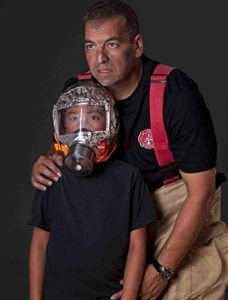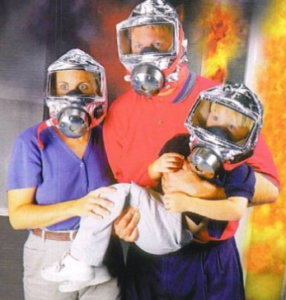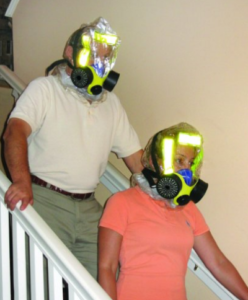New Threats Emerging
What 2018 is looking like for Emergency Plan Guide
 The Emergency Plan Guide website has been up since 2011. Its main objective has stayed the same since those first days: to help people understand disaster realities and be better prepared to face them.
The Emergency Plan Guide website has been up since 2011. Its main objective has stayed the same since those first days: to help people understand disaster realities and be better prepared to face them.
Three realities continue to sustain the site.
(If you’ve been with us for a while, this will be mighty familiar!)
- Emergency Preparedness isn’t top of mind for anybody. When asked, people say they want to be ready – they just don’t think about it on any regular basis. That’s why we came up with the idea of weekly Advisories, filled with tips and reminders. Since 2011 we’ve written hundreds, covering dozens of different topics. (Right now I count 297 in the list of Archives. A number of older Advisories have been retired, and several are being reworked.) People keep subscribing, so the Advisories will keep on coming!
- Family preparedness is one thing, workplace preparedness is another. You’ll see that we address both on a regular basis. We also address a third aspect of preparedness that very few other websites even mention – the importance of community and the value of working together as a group to prevent or make it through a disaster. Much of this planning is based on CERT (Community Emergency Response Team) training.
- Authorities do their best, but . . . Police and fire departments, local and federal government and non-profit agencies may not arrive for hours, days or even weeks after a disaster hits. We hear about new instances of delay, and we use them to keep reminding our readers that no one is coming to save them – it’s up to us.
OK, that’s three of the core beliefs that drive us. What drives YOU to work on being prepared? What threats are keeping you up at night? Keep reading, please.
Seven trends will be guiding our plans for 2018.
Some of these trends have been around for a while, but have pushed themselves to the top of the heap, demanding more attention.
- Technology changes faster and faster. Five years ago we might have written about how to use a compass and a map; today we write about personal locator devices (GPS) that will direct rescuers right to you! Smart phones have become THE primary tool in every survival situation; in the past several months solar rechargers have supplanted batteries as the best way to keep devices functioning. At the same time, more technology also means more security risks. Watch for an upcoming series on hacking threats to your home from the internet.
- There’s a new normal for natural disasters. In Texas, three 500-year floods occurred in the last three years! In California, three years of historic drought have been followed by the “most destructive wildfire season ever.” Some areas in the world – like Florida – are “hot spots” where sea level rise is 6 times faster than average. Add “normal” emergencies to these locations and it becomes a nightmare. Shelter in place doesn’t work well for these disasters, so watch for more info on how to prepare for evacuation.
- Deliberate cutbacks threaten (FEMA). Proposed budgets, not yet passed, aim at cutting federal emergency funding by nearly $1 billion! Local budgets are cutting police and fire department funding. This leaves citizens on their own more than ever before. We have three books on the drawing boards to strengthen citizen response; the first one should be coming out before the end of this year.
- Terrorist threats and hate crimes continue. ISIS may have lost its caliphate, but U.S. home-grown terrorists are alive and well. And hate crimes have risen in the U.S. for the second straight year. I guess we can’t change people’s minds about religion or ethnicity – but we can talk about how to spot a potential crime and what to do when you do. And we will keep talking about steps communities can take to increase safety. (Did you know that after the shooting at Sandy Hook, Connecticut passed new requirements and made money available to improve school safety, but barely 25% of schools are reporting that they have even held fire drills, much less hardened facilities or practiced lockdown drills!?)
- Risk of nuclear war reemerges after 3 decades. Almost impossible to contemplate. As older Americans, we remember the drills of the 50s. Watch for more as we struggle to consider the realities of this threat.
- Most people cannot retreat to the wilds and live off the land. The last census in 2010 showed 80% of the U.S. population living in “urban areas.” Here in California, that percentage was 95%! Today those urban percentages are only higher. What this means is rural lifestyle, which fosters self-sufficiency and encourages learning and practicing wilderness survival skills, is simply not available to most of us. Yes, we can enjoy learning more of these skills, but a plan to “bug out” to the wilderness is unrealistic. We will address more urban survival skills.
- We all face more distractions. Driving, devices, politics, health, family — it’s hard to be clear about objectives, much less to follow through. People are also reading less and less — the average American spends only 19 minutes a day reading! These facts have led us to turn more Advisories into quick read worksheets and skimmable checklists – and almost always, a Call to Action! (Nothing like having a background in direct marketing and advertising.)
Now, when it comes to emergency preparedness, what’s on YOUR mind?
When you sign up to receive our weekly Advisories, I get the chance to see the town your message is coming from. But that’s all I know about you!
Occasionally, people write in with a comment or question, and then we are able to begin a real conversation. (I like that a lot!)
After all, I’m researching and sharing information that I trust will be useful. If it’s not – well, it’s a waste of your time and mine.
So . . .here’s that Call to Action.
Can you please take a moment and send me a quick message with some trends or some topics YOU would like to discuss? I can promise I’ll respond! (I’ll keep your name private, of course.)
Here’s the link: Virginia, here’s what’s on my mind . . .
Thanks for being a part of our community. The more we all know, the safer we all will be.
Virginia
Your Emergency Plan Guide Team

 Fire:
Fire: 



 The truth is, there are warning signs for nearly all these acts of violence. When we look back, we almost always find a trail of anti-social or illogical behavior.
The truth is, there are warning signs for nearly all these acts of violence. When we look back, we almost always find a trail of anti-social or illogical behavior.



